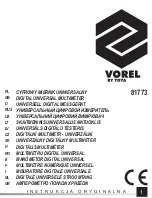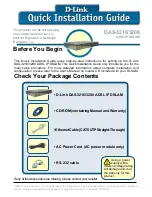
C H A P T E R 3 C O N F I G U R I N G V 1 0 0
V100 Versatile Multiplexer Technical Manual Version 2.2
Page 67 of 231
Every Data port has two independent Phase-Locked Loops (PLLs) associated with it; one for the receive
clock and the other for the transmit. In combination with the two internal clock busses this allows
channels to be set up for asymmetric bit rates, or to onward link or phase lock to any Clock source in the
network.
Clock switching selections are available according to the following table:
RXC TXC
EXT (Input, from pin)
EXT (Input, from pin)
TXC (Output, looped from TXC)
RXC (Output, looped from RXC)
DBA (Variable output, from PLL)
DBA (Variable output, from PLL)
PLL (Output, locked to clock bus)
PLL (Output, locked to clock bus)
SLV Only to be used under guidance
of qualified service personnel
SLV Only to be used under guidance
of qualified service personnel
INT (Output, locked to oscillator)
INT (Output, locked to oscillator)
In PLL, INT and DBA modes, where an output clock is being derived from a Phase-Locked Loop, the PLL
reference source must be selected from either the Global Receive Clock (GRX) bus or the Global Transmit
Clock (GTX) bus. The reference clock bus must first be attached to a source by selecting for example,
“>GRX” (TO GRX) on the ”Clocking” menu, implying that the selected channel clock is driven on to the
internal GRX bus. The RX PLL reference for the tributary channel may then be derived from the GRX bus
by selecting “<GRX” (FROM GRX) on the Data Channels menu.
NOTE: In earlier versions of software, the reference clock is configured differently. Please refer
to the appropriate manual for more information.
In DBA modes, the “Rate” entered is the maximum rate at which the channel will run, when there is no
demand for bandwidth from higher priority sources such as voice channels.
Refer to the “Clocks” section in the Features chapter for more details.
DESTINATION
Destinations are needed by tributary channels to specify to which port the data should be sent and the
format follows the rules “NODE:SLOT:CHANNEL”. The destination must be a channel of the same type,
i.e. a data channel destination must always be another data channel, but it can be anywhere in the
network, even for example, on the same card. This can be a useful aid in diagnostics.
Another useful technique is to specify a loopback in the destination field. By entering the word “LOOP” as
the destination, data to be sent out of a port is looped back internally to the receiver. By entering the
word “ECHO” as the destination, data coming into a port is internally looped to the transmitter. This is
applicable to aggregate ports and tributaries, but care should be exercised when using aggregate
loopbacks!
















































